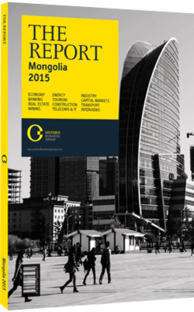Boosting telecoms usage and rural connectivity outside Mongolia's capital city a government priority
Mongolia’s status as the single least populous country in the world – according to recent census data the nation has a population density of 1.76 people per sq km – has presented a wide variety of challenges for the development of telecommunications systems. The cost of extending a fixed-line network into the nation’s vast rural areas – many of which are covered in mountains or empty desert – is out of reach for all but the largest telecoms operators, and ensuring return on investment in these projects is highly unlikely.
Despite these constraints, in recent years the government has announced that it is committed to ensuring that all residents of Mongolia have access to a wide range of telecoms services, including voice calling and data services. The state’s efforts in this area have resulted in recent infrastructure initiatives that have had a positive impact on connectivity. “The phone has become indispensable in [the] rural economy,” G. Oyunbayar, the director of sales at mobile operator G-Mobile, was quoted as saying in a World Bank report published in late 2014. “Phone connections have dramatically changed rural business practices. People can now adapt to the laws of supply and demand. Herders can now directly connect with local markets, and go even further, by distributing their products on a national scale.”
Expansion Constraints
Telecoms operators continue to face many challenges in terms of boosting rural connectivity. In fact, the rural areas of Mongolia are less sparsely populated than even the low population density data shows. As of mid-2014 around 50% of Mongolians lived in Ulaanbaatar, the capital city, which means that the remaining population (an estimated 1.4m people) are scattered throughout the rest of the country. Some of the nation’s more remote aimags (provinces) and soums (districts) are inhabited by just a handful of families, for example.
Rolling out comprehensive land-based telecoms infrastructure to remote rural areas in an effort to provide communications services to tiny communities is not economical. The fact that many Mongolians live nomadic lifestyles complicates this issue further. Finally, the lack of existing fixed infrastructure – including telecoms equipment, but also roads, for example – in most parts of Mongolia means that many areas of the country require surveying and other pre-installation and planning services before cables and other telecoms equipment can be set up. According to the World Bank, as recently as 2005 just 1% of Mongolians in the countryside had access to a telephone connection.
Ongoing Development
The government and a variety of international and private sector players have worked to overcome these issues. In 2005 the government launched the Information and Communications Infrastructure Development Project (ICIDP), with the objective of boosting telephony and internet usage in rural areas. The project, which wrapped up in late 2013, was supported by the World Bank and the government of Japan and was implemented by Mongolia’s Communications Regulatory Commission and the Information Technology, Post and Telecoms Authority. The ICIDP resulted in a variety of major improvements in rural connectivity, according to the World Bank.
By the end of 2013 all 360 rural districts had phone and internet connections; telephone usage in rural areas outside district centres had jumped to 530,000 minutes on an annual basis, up from nearly zero in 2005; some 12,000 people used the internet regularly in district centres, up from only 300 in 2006; and annual investment in rural ICT had jumped to $73.3m in 2013, up from $37.6m at the beginning of the project. These improvements required massive investments in rural telecoms by Mongolia’s four major mobile operators – MobiCom, Unitel, Skytel and G-Mobile – with subsidies and other financing from the government. This joint partnership model is expected to continue to be a source of telecoms development. In early 2014 the state-owned, fixed-line operator, Telecom Mongolia, announced it would launch a domestic 4G long-term evolution (LTE) high-speed wireless network in mid-2015, in conjunction with KT Corp, a South Korean firm.
You have reached the limit of premium articles you can view for free.
Choose from the options below to purchase print or digital editions of our Reports. You can also purchase a website subscription giving you unlimited access to all of our Reports online for 12 months.
If you have already purchased this Report or have a website subscription, please login to continue.

